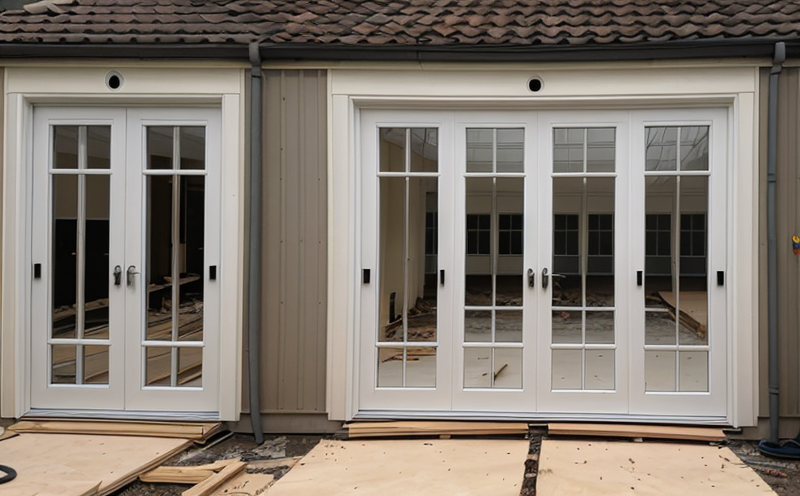Fire Endurance Testing of Aluminum Doors
The fire endurance testing of aluminum doors is a critical aspect of ensuring safety in buildings and structures. This testing ensures that doors can withstand exposure to high temperatures, flames, and other fire-related hazards for the specified duration without compromising their integrity or releasing toxic substances into the environment.
Aluminum doors are often used in commercial and industrial settings due to their lightweight, corrosion-resistant properties. However, these properties do not automatically translate to fire resistance. Fire endurance testing is essential to verify that aluminum doors meet specific standards for heat retention, structural stability, and smoke control.
This test typically involves placing a specimen door in a furnace where it is subjected to controlled temperature increases over time. The duration of exposure depends on the required standard but generally ranges from 30 minutes to several hours. During this period, parameters such as temperature rise within the compartment, heat flux through the door, and structural integrity are monitored.
After the test concludes, the door is inspected for damage or failure. Compliance with standards like ASTM E1469 or EN 13370 ensures that doors meet minimum performance criteria in real-world fire scenarios. The testing process also evaluates the door’s ability to maintain smoke barriers and prevent the spread of fire.
The importance of this test cannot be overstated, especially given the increasing emphasis on fire safety measures globally. By conducting thorough fire endurance tests, manufacturers can ensure that their products meet stringent regulatory requirements, thereby enhancing public safety and compliance with local codes.
Applied Standards
| Standard Code | Description |
|---|---|
| ASTM E1469-20 | Standard Test Method for Fire Endurance of Building Materials and Elements |
| EN 13370:2018 | Fire resistance tests - Doorsets and fire doors |
Benefits
The benefits of undergoing fire endurance testing for aluminum doors extend beyond mere compliance with regulations. Testing ensures that the door can perform its intended function in a fire situation, which is critical for occupant safety and property protection.
Enhanced Safety: Ensures that doors remain intact during fires, preventing the spread of flames and smoke.
Regulatory Compliance: Demonstrates adherence to international standards such as ASTM E1469 and EN 13370.
Product Quality Assurance: Identifies any weaknesses in design or manufacturing that could compromise performance under fire conditions.
Increased Market Confidence: Builds trust with customers, especially those operating in high-risk environments like hospitals and industrial facilities.
In addition to these tangible benefits, fire endurance testing also helps manufacturers identify areas for improvement. This process can lead to innovations that enhance the overall performance of aluminum doors, making them more effective at protecting against fires.
Why Choose This Test
Comprehensive Evaluation: Tests the door’s resistance to heat, flames, and structural integrity under controlled conditions.
Regulatory Compliance: Ensures that doors meet international standards for fire safety.
Enhanced Safety: Guarantees that doors will perform as expected in real-world emergencies.
Market Differentiation: Demonstrates a commitment to quality and safety, setting your product apart from competitors.
Cost-Effective: Identifies potential issues early in the development process, avoiding costly recalls or redesigns later on.
By choosing fire endurance testing for aluminum doors, you not only meet regulatory requirements but also contribute to a safer environment and enhance your brand’s reputation. This investment in quality can translate into long-term benefits for both your organization and its customers.





